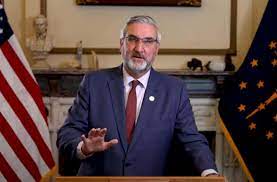WASHINGTON (August 5, 2022) – Today, the US Environmental Protection Agency (EPA) announced its plans to engage and inform communities, states, Tribes, Territories, and stakeholders about up-to-date information on the risks posed by air emissions of ethylene oxide (EtO) from commercial sterilizers, as well as EPA’s efforts to address these risks. EPA is releasing new information on specific facilities where lifetime risk levels are the highest to people who live nearby and is encouraging impacted communities to participate in a series of public engagements to learn more. Later this year, EPA expects to propose an air pollution regulation to protect public health by addressing EtO emissions at commercial sterilizers.
EPA analysis indicates that the air near facilities does not exceed short-term health benchmarks. However, the concern is that a lifetime of exposure to EtO emissions could lead to long-term health impacts if some of these facilities continue to emit at the current levels. EPA is working with these facilities to take appropriate steps to reduce emissions.
“Today, EPA is taking action to ensure communities are informed and engaged in our efforts to address ethylene oxide, a potent air toxic posing serious health risks with long-term exposure,â€Â said EPA Administrator Michael S. Regan. “Under my watch, EPA will do everything we can to share critical information on exposure risk to the people who need and deserve this information, and to take action to protect communities from pollution.â€
EPA is taking a phased outreach approach to engage the American public on this issue. This includes detailed web material with risk information for high-risk communities and a national public webinar taking place on August 10 from 8:00 to 9:30PM Eastern. EPA will be following this national level outreach with community specific engagements starting with communities where the risk is the highest.
Register for the national public webinar and learn more about upcoming community meetings.
EPA is continuing to gain access to more information about EtO, and to refine its scientific understanding of the risks it poses. Later in 2022, EPA will release additional, national-level information about the risks that EtO creates to those who work in EtO facilities, as well as those who spend time near them. Â
Medical sterilization is a critical function that ensures a safe supply of medical devices for patients and hospitals. EPA is committed to addressing the pollution concerns associated with EtO in a comprehensive way that ensures facilities can operate safely in communities while also providing sterilized medical supplies.
Since 2018, EPA has been working with federal partners, communities, states, Tribes, and stakeholders to reduce the risks posed by EtO exposure. Recently, EPA collected information in support of a Clean Air Act regulation to control EtO from commercial sterilizers. EPA used updated EtO emissions information from commercial sterilizers to estimate the increased risk of cancer related to the EtO emitted from almost 100 commercial sterilizers. The agency found elevated risks at or above 100 in a million in residential areas at 23 of those sterilizers. Long-term exposure to high concentrations of EtO can increase the lifetime risk of getting cancer.
The agency is sharing this risk information so that communities located near the highest-risk commercial sterilizers, and members of the public concerned about EtO exposure, have up-to-date information about emissions and health risks from EtO and can make informed decisions. EPA expects to propose an air pollution regulation later this year to protect public health by addressing EtO emissions at commercial sterilizers. This regulation will rely on the best available science and proven air pollution controls. At the same time, EPA will release proposed limits on how EtO can be used within sterilization facilities with the goal of reducing risks to workers who handle EtO and those who are exposed in other ways like working or attending school near a facility. The Agency is working with state and local governments, Territories, Tribes, facilities, and other partners to identify and implement near-term steps to reduce this pollution as soon as possible.Â
To view the list of sterilizers with elevated risk.
In addition to the community outreach announced today, EPA continues to take significant action to address EtO and advance critical EtO research. These actions include:
- Reviewing Clean Air Act regulations for industries that emit EtO into the air, particularly rules to control air toxic emissions from commercial sterilizers and facilities that manufacture chemicals,
- Working with state, Territory, local and Tribal environmental agencies to reduce EtO emissions,
- Expanding environmental reporting requirements for sterilization facilities,
- EPA is committed using enforcement options as appropriate,
- Reevaluating how EtO is used within sterilization facilities with the goal of reducing risks to workers who handle EtO and those who are exposed in other ways,
- Conducting research to better understand and measure EtO.








